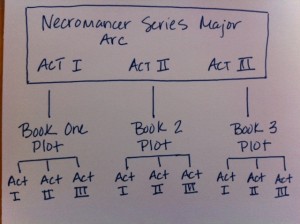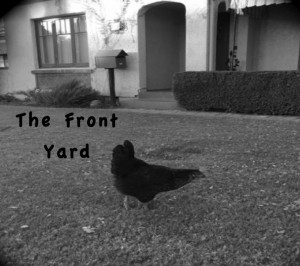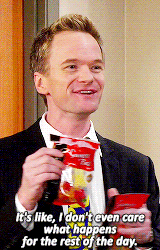I’ve wanted to write a series about writing a series 🙂 for a while now, partly because I’m stumbling along, learning as I go, and find that in posting and sharing, I’m learning from others and from the process. I’d love to hear what other writers have learned about writing a book series. Please share your insights, tips, and frustrations, if any. Or, as a reader, things you like or don’t like about book series.
The Necromancer’s Seduction is Book One in a three book Urban Fantasy series. It’s my first book. My first series. Sometimes I wonder what the hell I was thinking. But I guess I wasn’t thinking when the story came, just writing.
Disclaimer: I’m speaking from my experience of writing my series and what worked or didn’t work for me. Everyone has different writing styles and different stories, but that’s also why it’s very cool to hear about people’s different approaches.
There are also many different types of book series. Some are connected by the world and characters, but each book is a book unto itself. The next book in the series may take place in the same world, but may feature different characters facing a separate challenge. Or vice versa. Same characters, different world. And many variations in between.
My series is set in the same world throughout, with the same characters, and has a major story arc that will only get resolved in Book Three. So my Book One has a plot (or in reality a subplot) that gets resolved at the end of Book One, but it ties into and hints at the major story arc that builds and builds until it culminates in Book Three. Think Harry Potter. Each book deals with Harry discovering something about himself and his wizard skills, and resolving one specific threat, but the Voldemort story hangs and builds over everything that happens, influencing things in subtle ways, until the final battle at the end. For example, we don’t learn about Harry being a horcrux until the very end although we are given clues.
I wrote Necromancer Seduction-Book One-with maybe a smidgen of thought to the end of Book Three. And now, after writing the first draft of Book Two and starting Book Three, I’ve altered my mythology some as my characters reveal things to me, and as I develop the story. In hindsight, I wish I would have plotted out my entire series before starting Book One, but my brain is just not wired that way. The story for Book One came out as it came out.
However, despite the changes in my mythology, I’ve made very minor tweaks if any to Book One, and it hit me. I had written Book One almost like it was Act One of the Three Act structure, but for my major story arc. It’s an arc within an arc. Yikes. I do better with diagrams. (Here’s my high tech graphic 🙂

It’s helpful to review the purpose of the Act I or first chunk of a book. Usually, an author introduces the main characters, the basic plot, clears up any important action or events that occurred before the book began, maybe introduce a subplot or two, and some basic clues. And usually, the first chunk ends with a major action scene or complication that carries the story into the second chunk. (Sometimes sagging middles occur because too much was given away in the first chunk.)
What really made me realize that I had treated Book One of my series like the first chunk was that I hadn’t given too much away. I introduced the main characters and gave some insight into their background, but not everything. (For example, my hero Ewan has a major back story problem that impacts his life immensely and I’m not telling what it is until Book Three, although I provide some hints along the way.) I did slip in some basic clues about the world and past events that are important to the overall story arc in Book One, but I’m talking slivers because more wasn’t necessary. The rest comes in the subsequent books.
With Book Two, I reveal lots more, like an Act II. The purpose of Act II or the second chunk: add more complication, grow the seeds planted in the first chunk, provide new clues, expand and inform. The threads are still loose, but closing in. Usually, the second chunk ends with a bigger bang, but we don’t know how things will work out. And in the third and final chunk, pacing increases because we are solving problems and tying everything together. That’s basically how Book Three is panning out. A rush to the endgame, which was mostly revealed in Book Two. There are a few more surprises in Book Three, but it’s basically a race to the finish line.
Using the Three Act structure as a lens to view my three books helped me organize my series in my head, and how much to reveal in each book. Any thoughts and suggestions to share on how you organized/structured your series?
In my next post on writing a book series, I’m going to discuss character arcs and relationships throughout the series.
 First, can I squee at the Once Upon a Time season finale? It’s my guilty pleasure, what can
First, can I squee at the Once Upon a Time season finale? It’s my guilty pleasure, what can I say, but I loved it.
I say, but I loved it.


